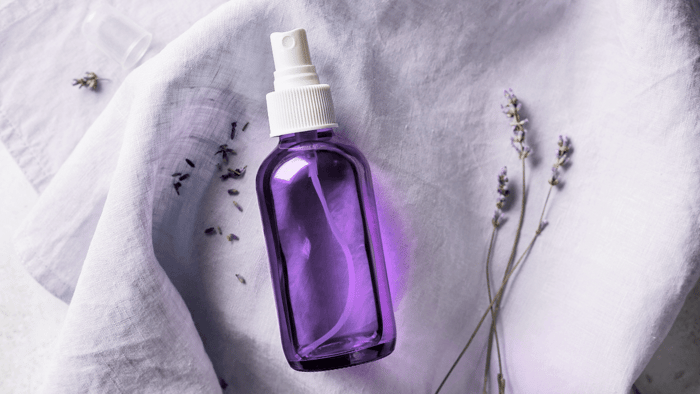If you're a home fragrance lover or small business owner looking to create beautifully scented sprays, you're in the right place. In this blog, we’ll walk you through how to make a room / linen spray with Dowanol DPM using UK-compliant methods. From choosing the right ingredients to understanding safe usage and measuring in grams, we’ve got everything you need to make a professional-quality spray that smells amazing and meets the standards.
What Is Dowanol DPM?
Before we dive into how to make a room / linen spray with Dowanol DPM, let’s first understand what it is. Dowanol DPM (Dipropylene Glycol Monomethyl Ether) is a solvent used in home fragrance and cosmetic formulations. It helps dilute fragrance oils and improves solubility in water-based sprays, resulting in a more stable and even spray mist without cloudiness or separation.
Unlike denatured alcohol or isopropyl alcohol, DPM has little to no scent of its own and doesn’t evaporate as quickly, making it ideal for longer-lasting room and linen sprays. It's also less flammable and more skin-friendly - perfect for use on soft furnishings like bed linen, curtains, and cushions.
Why Use DPM in Room & Linen Sprays?
Whilst learning how to Make a Room / Linen Spray with Dowanol DPM, let's also understand why using Dowanol DPM in your recipe offers several benefits:
Clear and stable formula: Helps prevent cloudiness and separation.
Improved scent throw: DPM enhances fragrance diffusion.
Longer-lasting spray: Slower evaporation means your scent lingers.
Gentler formulation: Less harsh than alcohol-based options.
It’s also widely accepted in the UK for use in home fragrance products and can be used to create CLP-compliant labelling, provided you use the correct fragrance load and safety data sheets (SDS) from your fragrance oil supplier.
Where to Buy Dowanol DPM
Dowanol DPM isn’t always available in local craft shops, but it’s easy to source from reputable suppliers online. At House of Scent, we stock high-quality, cosmetic-grade Dowanol DPM that’s perfect for making room and linen sprays.
Whether you're a hobbyist making small batches or a growing business looking for bulk sizes, we offer flexible options with fast UK shipping. We also provide detailed product descriptions, IFRA/CLP support, and tips for safe usage - making it easy for you to get started confidently.
DPM | Dipropylene Glycol Methyl Ether

£9.99
Our premium-grade Dipropylene Glycol Methyl Ether (DPM) - also known as Dowanol DPM - is a powerful, low-odour solvent known for its excellent solvency, slow evaporation rate, and compatibility with fragrance oils. Its high performance and low toxicity make it… read more
Other Ingredients You’ll Need
Here’s what you’ll need to make a 100g batch of room / linen spray with Dowanol DPM. You can scale this recipe up or down depending on your requirements.
Base Recipe (100g total):
Fragrance oil: 5g to 20g (5 - 20%)
Dowanol DPM: 80g to 95g (80 - 95%)
💡 Check your fragrance’s IFRA conformity certificate to ensure the percentage you plan to use is permitted for category 10A (non-aerosol sprays).
Equipment You’ll Need
Digital scale (accurate to 0.01g for small batches)
Mixing beaker or jug
Stirring stick or glass rod
Fine mist spray bottles
Funnel
Labels (with CLP info if gifting/selling your room / linen sprays)
Step-by-Step: How to Make a Room / Linen Spray with Dowanol DPM
Here's the process of exactly How to Make a Room / Linen Spray with Dowanol DPM in just 5 easy steps:
Step 1: Prepare Your Workspace
Clean your work area and gather all your materials. Make sure everything is sanitised and ready to go. Wear gloves and work in a well-ventilated area.
Step 2: Weigh Your Fragrance Oil
Using your digital scale, carefully measure 10g of fragrance oil into your mixing container. Make sure the oil is suitable for category 10A products. Your supplier should provide this information on the IFRA conformity certificate.
Step 3: Add Dowanol DPM
Next, weigh 85g of Dowanol DPM and add it to the fragrance oil. Stir the mixture gently but thoroughly to combine. Dowanol DPM acts as a solvent and will help the oil disperse more evenly into the water. Let this mixture sit for a few minutes to ensure proper blending.
Step 4: Let It Rest (Optional But Recommended)
For best results, allow your spray to sit for 12 - 24 hours before bottling. This gives the ingredients time to bond and develop the final scent. If you notice any separation after resting, give it another stir before bottling.
Step 5: Bottle Your Spray
Using a funnel, pour your room / linen spray into fine mist bottles. Amber or clear bottles work well, but always store away from direct sunlight and heat to preserve fragrance quality.
Label your bottles clearly, especially if selling. Include:
Product name
Ingredients
Safety pictograms and warning statements (from CLP classification)
Batch number
Volume
Contact Details
CLP Compliance for UK Sellers
If you’re making sprays for personal use, labelling is optional. However, if you plan to sell them, UK law requires CLP-compliant labelling based on the classification of your fragrance oil.
Here’s how to stay compliant:
Get the SDS from your fragrance oil supplier.
Use the IFRA conformity certificate to check the safe usage percentage for room / linen sprays.
Generate a CLP label using a label generator or service (e.g., House of Scent provides free templates or we can put you in touch with recommend CLP suppliers.
Include required warnings, allergens, and pictograms based on your formulation.
Always keep a copy of your recipe, SDS, and batch information for reference in case of customer queries or legal inspections.
Troubleshooting Tips
Cloudy spray? Try increasing DPM slightly or switch to a clearer fragrance oil.
Separation? Ensure fragrance and DPM are fully mixed.
No scent throw? Increase fragrance to 15-20%, but double-check IFRA safety limits first to ensure the fragrance oil is suitable for use in your chosen application.
Sticky residue on fabrics? Lower the fragrance load or test on non-visible areas first.
How to Store and Use Your Spray
Keep your room and linen sprays in a cool, dry place. Avoid exposure to sunlight or heat, which can degrade the fragrance. When applying to fabrics, always do a patch test first to avoid staining. Shake gently before each use, especially if stored for longer periods.
Final Thoughts
Now that you know how to make a room / linen spray with Dowanol DPM, you can confidently start experimenting with your favourite scents while keeping everything safe and compliant. Whether you're creating sprays for your home or launching your own product line, using Dowanol DPM gives your sprays a professional touch with improved clarity, scent longevity, and stability.
Stick to measuring your ingredients in grams, check your safety documents, and take time perfecting your blends. A well-crafted room or linen spray not only smells luxurious - it reflects the care and precision you’ve put into making it.
Ready to Get Started?
At House of Scent, we supply premium Dowanol DPM, fragrance oils, and provide resources to help makers like you create beautiful, compliant home fragrance products. Whether you’re a hobbyist or small business owner, we’re here to support you with quality ingredients and expert advice.
Disclaimer: The information provided in this blog is based on our knowledge, experience, and research at the time of writing. While we strive to ensure accuracy, we encourage readers to conduct their own research and verify information independently, especially when making business or purchasing decisions. It is the reader’s responsibility to carry out thorough product testing - particularly before commencing batch production. Customers are fully responsible for checking the latest IFRA documentation, using the correct CLP labels for their specific products, and ensuring they hold the relevant CPSR assessments where required. House of Scent is not liable for any actions taken based on the content of this blog.






.jpg)






